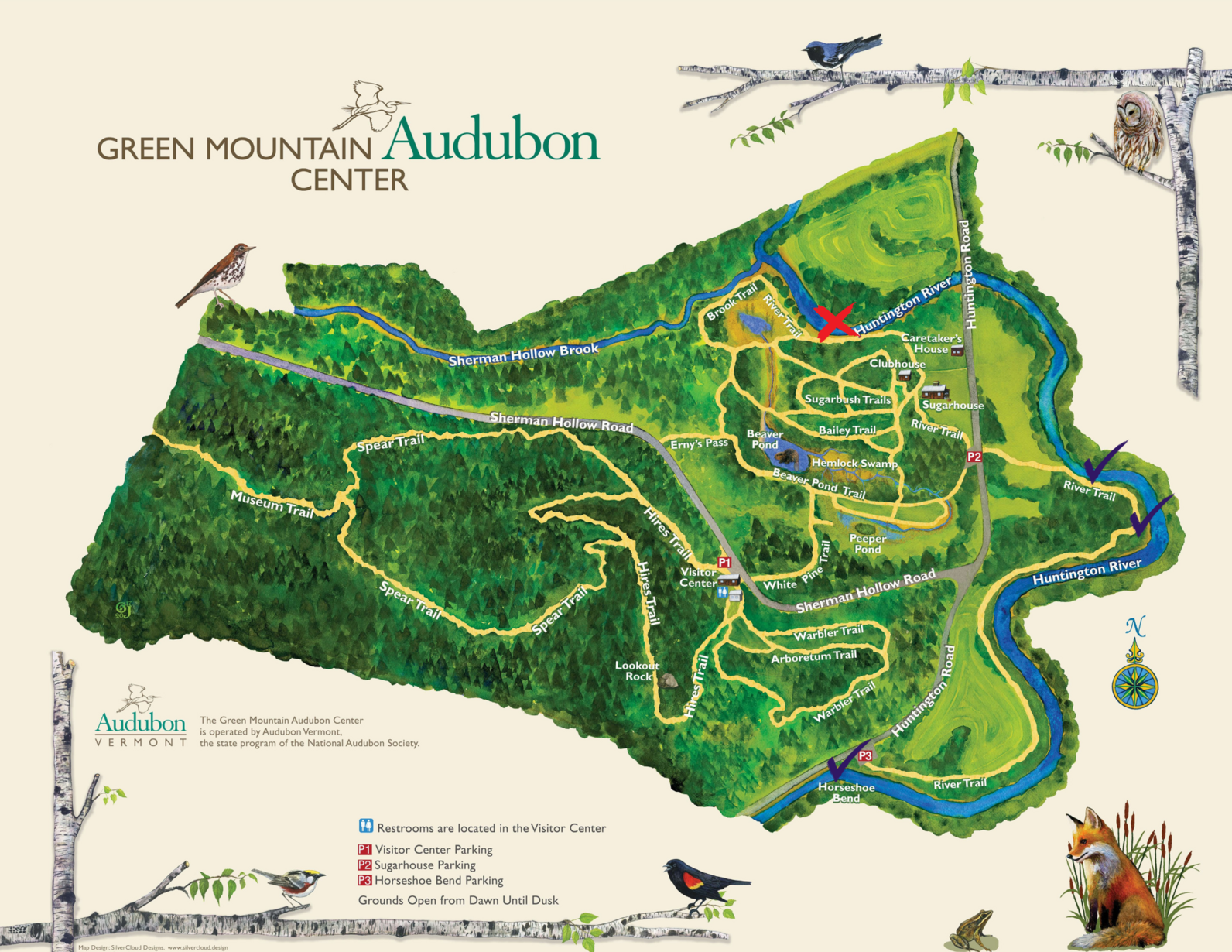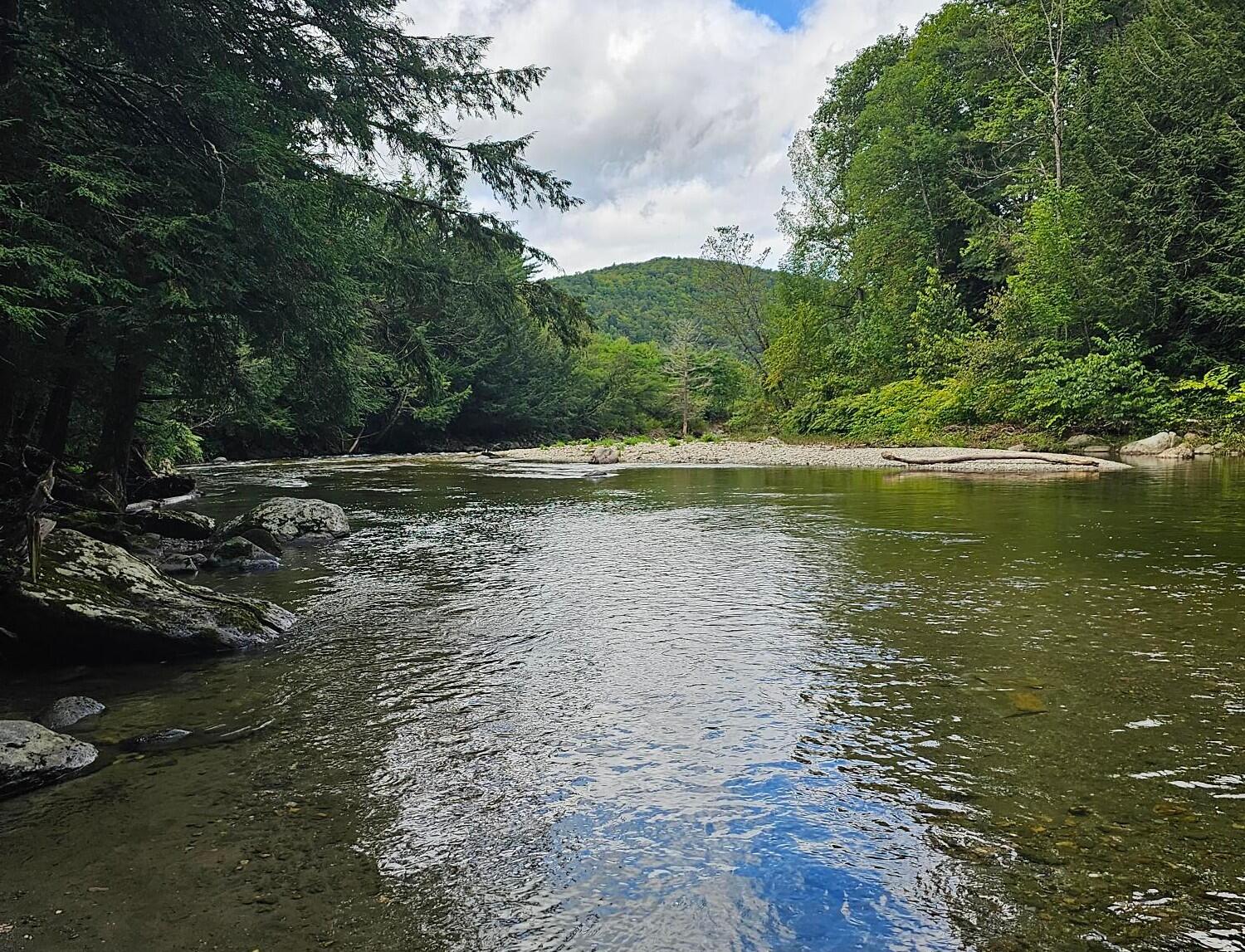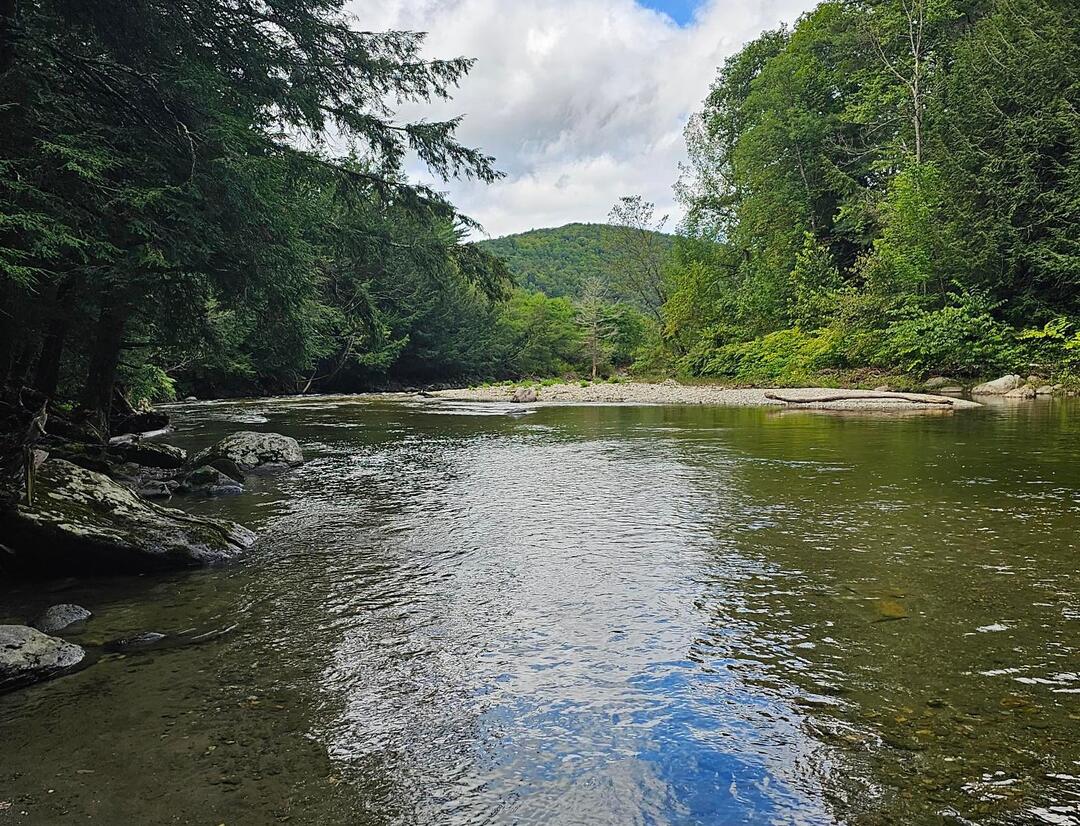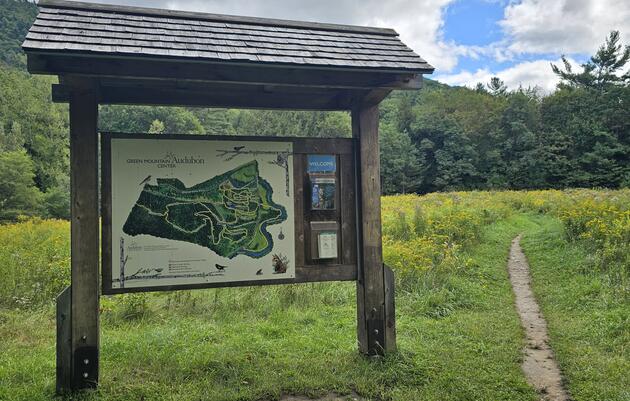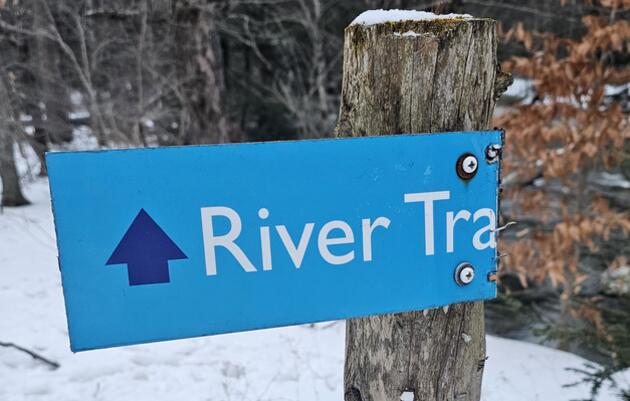In order for the Huntington to continue providing invaluable services for both the ecosystem and humans, we need your help!
Here's how you can help us preserve the Huntington River and its banks:
-
Stay On Trails: Please stay on marked trails while enjoying the Huntington River. Swimming and wading are not considered normal trail use activities and are done so at your risk. Please do not climb down banks to access the river as this further damages the banks and the plants that are helping stabilize them. The only river access points are a few sandy areas directly adjacent to the trail, located across the street from the Sugarhouse Parking Area. View Map Below.
- Keep Dogs Leashed: Dogs are required to be on leash at all times when visiting the Green Mountain Audubon Center. Keeping them on leash prevents them from accidentally damaging the vegetation and plants along the riverbank or disturbing nesting birds. Read our full dog policy here.
- Pack In and Pack Out: Please bring all your belongings and trash with you when you leave. There are no trashcans along our trails or in our parking lots. Don’t forget to pick up after your dog and pack out your poop bags as this will help us keep trash, bacteria, and parasites out of the river!
- Do Not Move or Remove River Rocks: Moving rocks from the river disrupts the ecosystem by disturbing or killing aquatic plants, insects, and fish eggs. It can also displace the soil in the area, making banks even more prone to erosion.
- Reduce Chemical Contamination: Consider wearing reef safe sunscreen and removing flea and tick collars from pets if wading in the river (again at your own risk).
Other important trail rules to keep in mind when visiting the Huntington River at Green Mountain Audubon Center this summer:
- Camping and fires are not permitted.
- The Green Mountain Audubon Center is an alcohol, smoke, and drug-free establishment.
- Please park in designated lots only. Do not park along roads or in our fields. Parking along the roads creates a safety hazard for pedestrians, cyclists, and drivers. Parking in our fields damages vegetation and endangers ground nesting birds. Not to mention that poison ivy grows along the road and in some of our fields! If our parking lots are full, please come back and visit us another time!
- Parking areas are not monitored, be sure to lock your cars and leave belongings at your own risk.
Thank you for joining us in stewarding the ecologically important and diverse lands at the Green Mountain Audubon Center. Together we can help ensure that this special place can be enjoyed by both people and wildlife for years to come.
